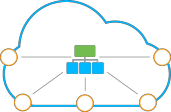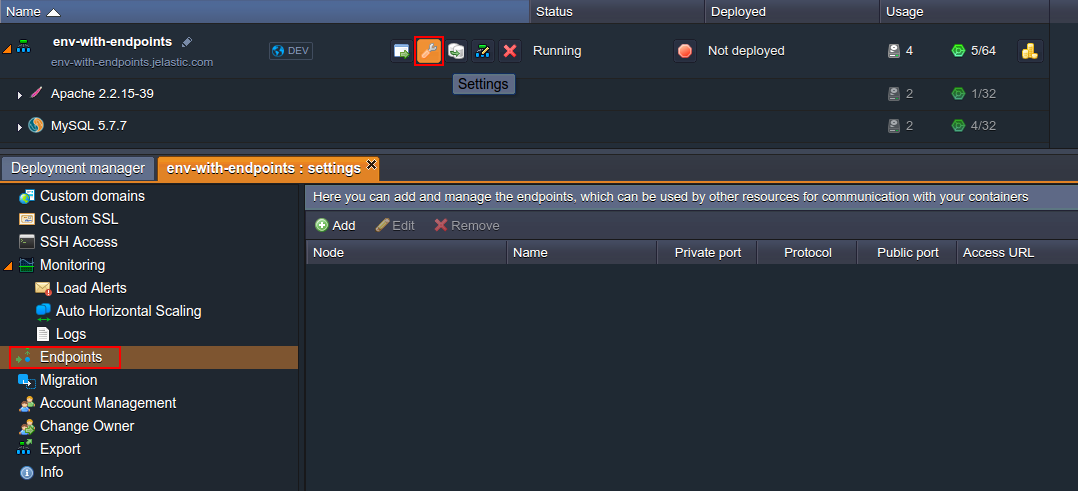Endpoints

The Endpoints feature at the platform refers to the possibility of TCP/UDP ports mapping via the Shared Load Balancer, which is intended to simplify the instances' collaboration with third-party tools and resources. This is achieved through providing the ability to establish the direct connection (over either raw TCP or UDP protocol) to the corresponding node, without the mandatory Public IP address attached.
Such linking can be used to enable a great variety of different tasks, like remote database management, direct apps' deployment from IDE (for IIS), running multiple project copies on a single instance, accessing a server’s admin panel with no external address bound, etc.
Tip: Beside the increased convenience, with endpoints you can cut your spends for the External IP usage, which, otherwise, would be required for such operations. Obviously, endpoints can’t completely replace them, but may become useful in some elementary jobs, and being combined with other platform features (like automatic vertical and horizontal scaling, discounts tiers, etc.) such an approach can help you to significantly save your money.
Follow the instruction below to find out how to work with endpoints at the platform and discover a few interesting use-cases to try them by yourself.
Endpoints Managing
The list of endpoints can be accessed via the environment Settings menu, that opens through selecting the same-named button for a particular environment.

Within the opened tab, switch to the Endpoints menu item. Now you can start working with your mapping’s list:
- add new endpoint
- edit/remove the existing endpoint
Adding Endpoints
To create a new endpoint, click the Add button from the top tools' pane and fill in the appeared Add Endpoint form with the relevant data: